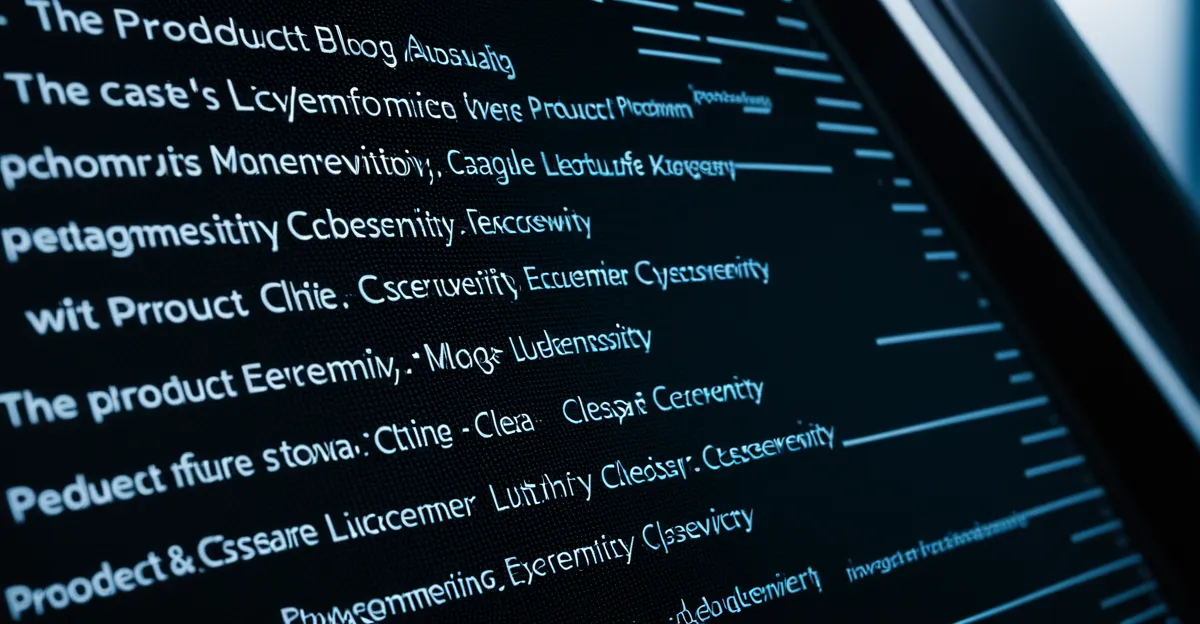Product Lifecycle Management (PLM) transforms how organisations secure products by embedding cybersecurity early in design and development. Integrating PLM with your cybersecurity framework ensures continuous risk assessment, streamlined collaboration, and faster response to vulnerabilities throughout a product’s entire life. This approach not only strengthens protection but also aligns security with innovation and operational efficiency.
Essential Insights: How Product Lifecycle Management Enhances Your Cybersecurity Framework
PLM stands for Product Lifecycle Management, a comprehensive framework connecting people, data, processes, and technology throughout a product’s journey, from concept to retirement. This broad integration allows for more streamlined collaboration, heightened operational efficiency, and improved traceability—key to proactively managing cybersecurity risks at every phase. You can view more details on this page: Learn more now.
In the same genre : How Does High-Tech Computing Transform Daily Life in the UK?
By structuring workflows and centralizing cross-functional information, PLM not only accelerates product development but specifically addresses emerging cyber threats. Embedding security practices during the design stage ensures digital safeguards are part of the initial blueprint, not afterthoughts. Through automated compliance checks, PLM simplifies adherence to industry security standards and protects sensitive IP over time.
A robust product lifecycle management framework empowers companies with end-to-end visibility—critical for monitoring vulnerabilities that may surface across suppliers or as the product evolves. This approach enables rapid response to threats, continuous compliance verification, and seamless management of security updates and certifications.
Also read : How Does High-Tech Computing Transform Daily Life in the UK?
Furthermore, effective PLM solutions leverage analytics for ongoing risk assessment and data protection. This resilience meets modern user expectations for accountability, security, and responsiveness across the full product portfolio.
Key Stages in Product Lifecycle Management and Security Integration
Core PLM Lifecycle Phases
A product lifecycle management framework typically organizes activities into five distinct phases: concept, design, manufacturing, service, and disposal. In the introduction stage of product lifecycle, market needs and requirements drive brainstorming and specification, resulting in early sketches and technical targets. The design stage transforms ideas into prototypes, validated against requirements—a crucial period for establishing documentation standards. In manufacturing, focus shifts to process optimization, quality assurance, and scalable production, all structured by robust product lifecycle documentation standards. After launch, products enter the service phase, encompassing repairs, upgrades, and support, before reaching disposal, where responsible retirement, recycling, or refurbishing occurs.
Cybersecurity Integration at Every Stage
Security now begins at the introduction stage of product lifecycle, embedding controls, authentication, and secure data flows from initial drawings through service and eventual disposal. Integrating PLM security and compliance features into each phase ensures supply chain visibility and enforces audit-ready processes. Modern approaches automate threat checks and regulatory updates throughout the product lifecycle management framework.
Documentation and Compliance
Maintaining rigorous product lifecycle documentation standards supports traceability and risk mitigation as products progress across all stages of product lifecycle. Comprehensive, real-time records—mandated by many industries—safeguard against compliance lapses and simplify both internal review and third-party audits, anchoring a resilient, secure product lifecycle strategy.
PLM Software, Tools, and Industry Examples for Cyber-Resilient Management
PLM software benefits extend far beyond data organization—they enable digital product lifecycle management with built-in security and compliance automation. Leading platforms like Siemens Teamcenter, Oracle Cloud PLM, and PTC Windchill feature centralized product lifecycle data management, version control, and granular access permissions, supporting regulatory standards in sectors like automotive and pharma. Automated alerts and historical change logs ensure PLM security and compliance features address threats quickly and prevent data leakage.
When examining real-world PLM for manufacturing industry, companies integrate digital twin and lifecycle management to monitor product health and proactively manage vulnerabilities. The pharmaceutical sector, under strict compliance, relies on PLM tools and features like secure document management and audit trails for traceable, compliant workflows. These cloud-based product lifecycle platforms also streamline change management, keeping records accessible for regulatory review.
PLM integration with ERP and supply chain management tools creates unified oversight for secure collaboration across departments. By linking PLM software vendors overview modules with ERP, organizations achieve seamless lifecycle tracking, risk mitigation, and scalability—especially vital for complex, distributed manufacturing environments. This synergy delivers resilient, future-proof lifecycle operations.
Best Practices and Future Trends in Secure Product Lifecycle Management
Establishing Organization-Wide Cyber Resilience Through Best-in-Class PLM Strategies
Effective product lifecycle best practices start by embedding cybersecurity into every phase. Organizations using agile product lifecycle management practices ensure fast, iterative improvements, keeping security controls current as threats evolve. Integrating product lifecycle analytics creates deep visibility, allowing anomalies or vulnerabilities to be detected in real time. Proactive product lifecycle risk management—supported by up-to-date documentation and cross-functional communication—fosters resilience across development, supply chain, and manufacturing.
Leveraging Automation, Analytics, and Digital Twins
Automation within PLM tools not only streamlines quality checks but strengthens cyber defense by enforcing policy adherence and prompt patching. Digital twins, offering virtual representations of products, are central to product lifecycle analytics. They enable simulated attack scenarios and lifecycle performance reviews, providing actionable risk mitigation insight. When paired with robust product lifecycle risk management, digital twins and analytics drive continuous improvement, reduce manual oversight, and lower long-term vulnerability.
Future Outlook: AI, IoT, and Regulatory Trends
Emerging trends in PLM highlight AI-powered forecasting, IoT-driven real-time monitoring, and regulatory alignment. As global standards tighten and threats become more sophisticated, agile product lifecycle management practices enable organizations to pivot swiftly. Product lifecycle customer feedback integration supports adaptive, user-focused PLM strategies—shaping secure, compliant product environments more efficiently.



